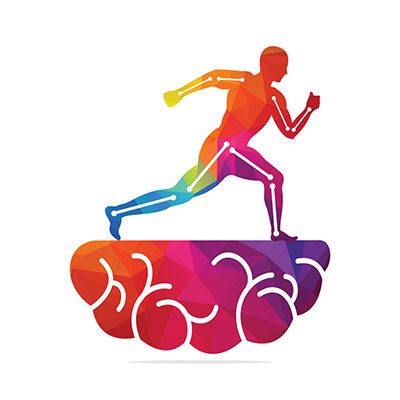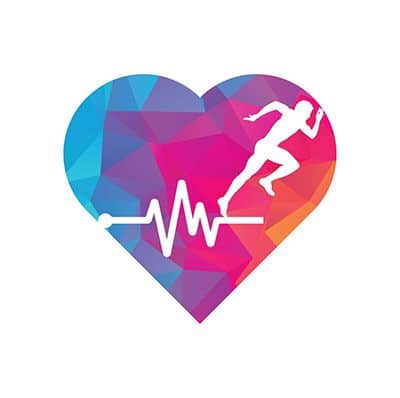Whether you're a recreational lacrosse player or an elite-level competitor, understanding how to recover from injuries and workouts properly is crucial to improving performance.
An effective recovery process will allow your body to repair itself after injury or physical activity, leading to increased energy levels and better overall results on the field.
With that in mind, here are some of the best recovery tips for lacrosse athletes that should help keep you at peak form all season long!
More...
Take Away Key Points:
Below you can find some of the best tips to recover your body from lacrosse injuries. No matter whether severe or less severe, injuries can seriously affect your overall performance and weaken your game and strength.
But with the best recovery methods, you can overpass all obstacles and play better. So let's see the most vital ones.
Best Tips for Muscle Fibers & Muscle Recovery
Here are some of the crucial tips for muscle recovery and fibers.
1. Massage gun for sore muscles

A massage gun offers multiple benefits to your muscles. Here are the critical ones:
2. Foam roller
Foam roll eases muscle soreness and pain. Your body weight controls pressure to specific muscle groups, including the IT band, hamstrings, back, and young glute.
So, foam rolling also increases your workout for better results.
3. Kinesiology tape
The tape is applied to your injured body and helps with pain and swelling reduction. It provides support to your muscles and lifts your skin.
It also alleviates joint irritation. Also, the therapy helps with joints or weak muscles.
4. Muscle stimulation therapy
This therapy is traditionally used in rehabilitation settings and physical therapy. The therapy imitates natural muscle contraction, enhancing blood flow to the muscles.
In addition, it increases nutrients and fresh oxygen while flashing away harmful toxins. Finally, you can apply the therapy to all muscle groups on your injured body.
Best Tips for Athletic Performance After an Injury
Lacrosse players suffer from injuries similar to other team sports with allowed physical contact. However, the recovery process offers certain benefits for players to rest more and recuperate their bodies.
Some of the best recovery strategies for lacrosse players include:
1. Rehydration

After a lacrosse game, lacrosse players are too tired, and their bodies are depleted of electrolytes.
So, every lacrosse player should mix hydration powder with their water bottle. It will refuel your body with essential micronutrients for optimal performance and total body recovery.
2. Wearing recovering footwear
After long tournaments and summer camps, taking care of your feet is an essential recovery tip for your feet. Various players wear recovery-specific slides and take off their cleats to rest their feet and improve their leg health.
Unlike the regular slides with zero benefits to your health, recovery slides offer an ergonomic design that is comfortable for your legs. In addition, they reduce stress on ankles, joints, and knees.
3. Ice bath/cold plunge
Ice baths are necessary for both professional lacrosse athletes and high school athletes. The ice baths increase energy levels and focus on recovering muscles too.
Some of the basic performance tips include:
4. Active recovery
Active recovery implies a low-intensity activity to recover fully. It's similar to your training sessions but less extreme.
Instead of remaining passive the following day after an injury or too much rest, your effort to practice to recover faster will result in higher improvement. You can train hard to increase blood flow, recover muscles, reduce soreness, and keep your muscles loose.
You can try various workout methods - yoga, assault or stationary bike, or light swimming. Various athletes practice these training sessions to improve their overall lacrosse ability.
5. Protein shakes
A protein shake is an excellent source of sugar-free flavors, amino acids, and digestive enzymes. However, these are not enough to keep your body optimal.
It's essential to eat healthy food, have a good night's sleep, and keep your body constantly in motion to burn excess calories and maintain optimal health.
Proteins help you get more strength, but quality sleep and proper food help you recover faster and perform better during the play.
Also, the good-night-sleep reduces the risk of injuries during a lacrosse game and prolongs your healthy career as an athlete.
6. Stretching
It is crucial to stretch after a lacrosse game.
Stretching reduces the risk of injuries and offers valuable aid in recovering faster. When you stretch, you will also eliminate possible cramping and calf tightness, as these are the most common lacrosse injuries.
Stretching affects boosting flexibility, decreases muscle tension, and increases blood flow. If you're playing defense on the lacrosse field, stretching will help you gain more strength and play aggressively.
So, when you stretch after a lacrosse play, you can perform optimally in the next match.
7. Iron neck training
This training reduces concussions. Many concussions are caused by the brain slamming against the skull and the neck slapping back.
With this training, you will eliminate this injury type. You won't have to wear the Q-collar for your neck.
Other advantages include:
- reducing back and neck pain
- increasing range of flexibility/motion
8. Non-alcoholic beers
These are a top secret among professional athlete leagues.
However, non-alcoholic beer is getting increasingly popular among all athlete leagues, and it's an ideal solution to celebrate a victory without the negative effects of alcohol.
Frequently Asked Questions
What helps athletes recover faster?
Some of the most valuable therapies include: hydrotherapy, massage, sleep, nutrition, stretching, active recovery, compression garments.
What is the fastest recovering muscle?
The faster-recovering muscle groups include the biceps, triceps, and calves.
What foods help repair muscle damage?

To recover from muscle damage, you must eat: dairy, eggs, whey protein shakes, fatty fish, pomegranate juice, beet juice, watermelon, watermelon juice, tart cherry juice, starchy vegetables, coffee.
What are the 3 R's of recovery for an athlete?
The 3 R's of recovery for an athlete include rebuilding, rehydrating, and refueling. These include the pillars of recovery nutrition and post-workout.
What can I drink for faster recovery?
For a faster recovery, you can drink:
- post-workout recovery drinks
- sports drinks
- coconut water
- chocolate milk
- tart cherry juice
- enhanced waters
- water
- alternative hydration options.
What is a good recovery routine?
The activity routine is one of the best routines to recover from your impaired health conditions. For example, you can try a leisurely bike ride, yoga, swimming, or stretching.
Final Words
Recovery is essential for any athlete, especially those who play high-impact sports like lacrosse. By incorporating some or all of these recovery tips for lacrosse athletes, you can improve your condition and take your game to the next level.
Try out different techniques and see what works best for you–you'll be sure to notice a difference in how you feel during and after practice or competition.
